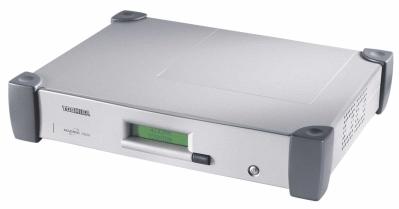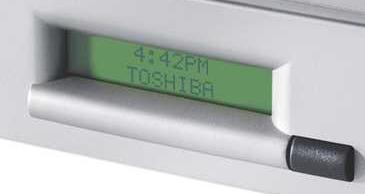Article: Device profile: Toshiba SG20 Wireless Mobility Server
Jun 12, 2002 — by LinuxDevices Staff — from the LinuxDevices Archive — 7 viewsToshiba's Computer Systems Group (Irvine, CA) recently introduced the Magnia SG20 wireless mobility server, a compact, Linux-based portable wireless server. About the size of a typical notebook computer, the appliance-like device is intended to make it easy to pack up an entire network and take it on the road. Described by Toshiba as a “wireless network in a box that allows users to securely access and share files, printers, and an Internet account,” the Magnia SG20 is targeted toward small and medium-sized offices, mobile consultants, remote offices in large organizations, home offices, and other applications needing mobile networking capability.

By simply adding a wireless PC Card, the Magnia SG20 seamlessly connects wireless-enabled devices using Wi-Fi technology (802.11b) without the need for an external 'wireless access point'. The system offers a number of other useful server features, including web caching, content filtering, backup, email services, and remote administration. Configurable firewall protection guards against unwanted intrusion over the Internet, and the device also provides a virtual private network (VPN) feature which offers secure access to authorized users when connecting from offsite locations.
Internally, the Magnia SG20 is based on an Intel 566MHz Celeron processor with up to 512MB ECC SDRAM (128MB is standard). The system comes with one or two 2.5-inch EIDE 15GB or 30GB hard drive (both drives must be of equal capacity). A simple status display is built directly into the device; it consists of a 2-line by 16-character backlit LCD, along with a scroll button.

“The SG20 was designed to be headless, to support our main objective of wireless mobility,” explained Andrew McCloskey, director of engineering for Toshiba's Computer Systems Group. “This also aligns with our other goals of creating an appliance that is easy to use and easy to support.” Administration of the device is accomplished via a web browser interface. The built-in LCD is used to show the status of various key system modules, and to provide notification when software upgrades become available.
Linux inside
The system's internal operating system is based on Red Hat Linux Version 7, according to McCloskey.
“The Computer Systems Engineering division within Toshiba America Information Systems has been developing Linux-based solutions for almost 3 years now,” said McCloskey. “Initially, expertise was self-learned from existing engineers who had Unix experience. Over time, engineers with Linux experience were added to the team to further increase the expertise. Currently, this engineering group develops Linux solutions not only for the US market, but also worldwide markets.”
Among the key software tasks undertaken by the development team was the creation of “a module to monitor the health of various hardware components (fans, CPU temperature, etc.),” McCloskey explained. “This data is reported locally to the customer via the browser-based administration screen. Optionally, the customer may sign up for the Toshiba Health Monitoring Service, which allows the health of the SG20 to be monitored remotely on a daily basis by trained IT professionals.”
“Finally, we developed software for automatic software upgrade notification in the event there are any security or functional upgrades available,” added McCloskey. “This removes the requirement for customers to go to our web site to check for upgrades manually.”
In addition to Linux, another important open source software component used within the device is the Apache web server, which enables both local local and remote web-based administration and application support. Also, AppleTalk is installed to provide Macintosh compatibility with the SAMBA file system.
“There are also approximately 100,000 lines of [Toshiba-developed] software designed to make the system robust and reliable,” McCloskey continued. “On the Software Development Kit version, additional modules not used by the standard SG20, such as ProgresQL, are also available for use.”
“We learned a great deal as we developed the predecessor product, the SG10. By the time the SG20 development started, our Linux development expertise was very close to our mobility and wireless expertise. With this knowledge, we overhauled the interface and middleware design for the SG20,” concluded McCloskey.
Availability
Toshiba's new Linux-based Magnia SG20 wireless mobility server is available now, in single or dual hard disk drive configurations, from www.shoptoshiba.com or through Toshiba's traditional distribution channels. Prices start at $1,440.
This article was originally published on LinuxDevices.com and has been donated to the open source community by QuinStreet Inc. Please visit LinuxToday.com for up-to-date news and articles about Linux and open source.